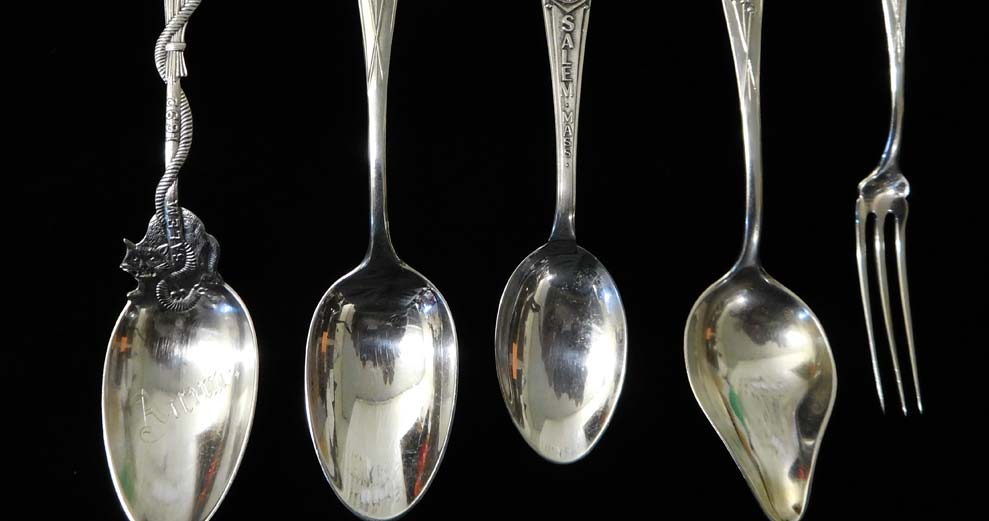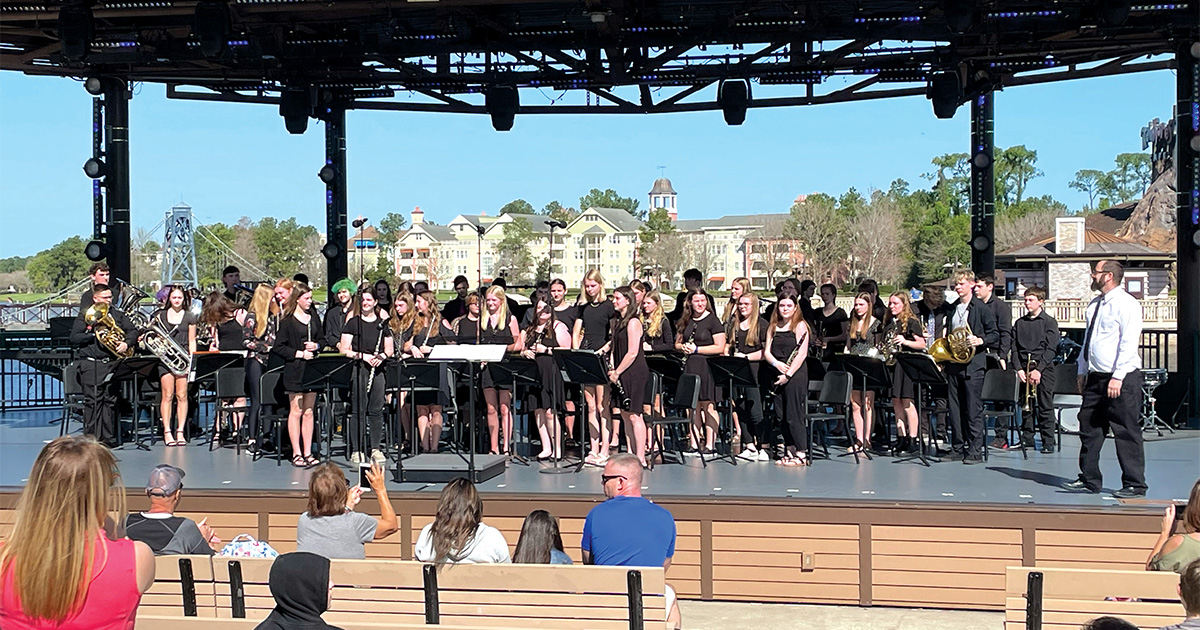Regarded as the first souvenir of the 1692 Salem Witch Trials, the sterling silver “witch spoon” was created and sold during the late 1890s in Salem, Massachusetts, by Daniel Low & Co.
Beyond its significance within local Salem history, this spoon is also typically regarded as the first design to spark the souvenir spoon craze in the United States. Following Low’s initial witch design, American manufacturers began producing dozens of collectible spoons that quickly became an extremely popular tourist keepsake across the U.S.
The first spoon design was commissioned by Low in 1890 following a trip abroad. As the story goes, the idea to produce the souvenir spoons originated from the observation of the burgeoning trade of commemorative silver spoons within the European tourist market. Upon returning home, Low commissioned Ww. B. Durin & Co. to design a singular souvenir spoon. These spoons are decorated with a simple interpretation of the now stereotypical witch astride a broomstick, alongside the word “Salem.” A tea spoon of this first design cost $2 in 1890; when adjusted for inflation this spoon would cost approximately $54 in 2018.
With the massive success of the first spoon’s design, Low went on to commission Gorham Silver to create a second, more ornate design the following year. This succeeding pattern consists of a more substantial, intricate design, as it depicts a black cat with an arched back, a rope, a broomstick, the addition of both the place and date of the witch trials, and the witch flying aside a half moon. This design was an instant success and considerably overshadowed the simplistic first pattern. With the success of these designs, Low registered the “witch” trademark as U.S. Patent No. 18,838 in 1891, making him the first manufacturer to produce a souvenir denoting Salem’s witch-related past.
Opening its doors in 1867, the Daniel Low & Co. business was located at 231 Essex Street, the modern day location of the restaurant Rockefella’s. The emporium specialized in high-class, elegant goods, ranging from small trinkets such as silver thimbles and pins to the more intricate silver hair combs and diamond fitted jewelry, china sets, watches, writing sets, pocket knives and far beyond. Daniel Low (1842-1911) was a savvy businessman and brilliant innovator, particularly notable for his use of mail-order catalogues, which he titled the “Year Book.” These catalogues are cited by some as the first of their time, which Low distributed both across the country and abroad.
This year, the Salem Witch Museum received the generous donation of four original Daniel Low sterling silver souvenir spoons and one fork. Three utensils—a berry fork, orange spoon and tea spoon—are original, first design souvenirs. In addition, the museum also received a tea spoon with the more ornate second design and a newer souvenir spoon made in 1970.
The Salem Witch Museum currently has these beautiful antique spoons in a small exhibit devoted to the history of Daniel Low, his Salem business, and the legacy of these remarkable spoons.
Written by Rachel Christ, Salem Witch Museum Education Director
Sources:
Pamela E. Apkarian-Russell, A Collector’s Guide to Salem Witchcraft & Souvenirs, Schiffer Publishing, 1998.
Pamela E. Apkarian-Russell, “Daniel Low & the Salem Witch Trial,” Journal of Antiques and Collectibles, August 2012.
Helen Breen, “Daniel Low’s Silver ‘Witch Spoons’ among Salem’s First Souvenirs,” Historic Ipswich, October 26, 2017.
Thomas Franklin Hunt, “Visitor’s Guide to Salem,” originally publisher Essex Institute, 1897, located at Harvard University Library, digitized 2008.
Robert R. Updegraff, “The Story of Daniel Low,” Printer’s Ink Monthly, January 1920.
Robert E. Weir, “Bewitched and Bewildered: Salem Witches, Empty Factories, and Tourist Dollars,” Historic Journal of Massachusetts Volume 14, Summer 2012, published by the Institute for Massachusetts Studies, Westfield State University.
Country Home Magazine, “Stir Crazy: Collectors Get a Handle on Turn-of-the-Century Spoons,” Chicago Tribune, April 10, 1988.




